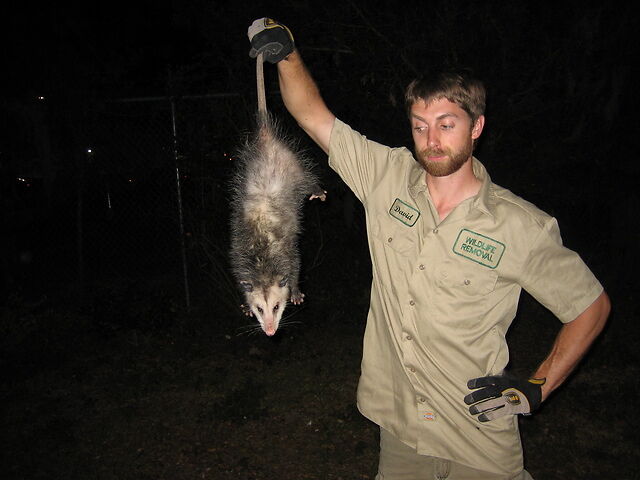What to Do After Catching An Opossum
If you’re a homeowner in the Eastern half of the United States, chances are you’ve had an encounter with an opossum. These marsupials are the cause for all kinds of problems if they invade your home or property, and taking care of them quickly, before they cause too much damage to your home or other property, is crucial.
Options

There are a number of ways of dealing with this specific animal.
- Probably the easiest way is to simply wait until it is no longer breeding season, which usually extends from October to December, at which point the opossum family will probably leave.
- Filling access holes that opossums use to get into your home or other property also tends to be effective. Just make sure to wait until nightfall to plug these holes, as opossums are nocturnal creatures and you certainly do not want to trap them in your house, under your deck, or in your garage indefinitely.
But let’s say you’ve decided to go a different route, and set traps for your furry invader, capturing one with this new, properly placed device – what now?
Male or Female?
One of the first things to determine about your new hostage is whether it is a male or female. Though males pose a mostly individual threat, female opossums can have a litter of joeys that can continue wreaking havoc on your house, garage, garden, or shed if they are not all accounted for. So determining this is crucial for how you proceed. If you call an animal expert and find out that you have a female possum who is in the breeding or nursing stages of her life, you should immediately start looking for the joeys. These little possums can cause as much damage to your property as their parents, and keeping mothers together with their babies is a much more humane way to take care of these pesky critters. If it is close enough to the breeding season, these joeys may still be in the mother’s pouch, meaning you do not necessarily have to deal with them in addition to their fully-grown mother.
What to Do Next
After you have made that determination, there are basically two ways to proceed. You can either 1) kill the opossum, after checking local laws and making sure that is a valid course of action, or 2) attempt to relocate it to a new home, away from your home and property. This also requires a knowledge of local laws, as trapping and relocation of opossums is not legal in all states. However, if it is legal in your state, it is recommended that you release your captured opossum about five miles from your property. This distance all but guarantees that the pest will not find its way back to your property, but also takes the safety of the animal into consideration. Placing it at this approximate distance makes sure that the animal remains in a very similar environment as it was in your yard, increasing its chances of survival.